The History of the Ugg Brand

Fashion trends might come and go, but for decades, the Ugg brand has been a staple in America’s closets. In recent years, the shoe company has seen a new resurgence in popularity, thanks to fresh updates to its classic shearling boots and clogs — and nostalgia for the early 2000s, when Ugg first became a pop culture phenomenon.
During that time, Ugg was a staple of many celebrities’ wardrobes, including Paris Hilton, Beyoncé and Kate Moss. Paired with Juicy Couture tracksuits and denim mini skirts, the boot made the wearer instantly cooler by proxy.
More from Footwear News
Ugg’s story extends well beyond the early aughts, though, going all the way back to the beaches of California in the disco era.
Over the years, its ownership and leadership have changed, but the essence of the brand — and its aesthetic — have remained largely unchanged.
Below is a look back at the history of Ugg, including insight into the boots’ original use and why they have been so enduringly popular.
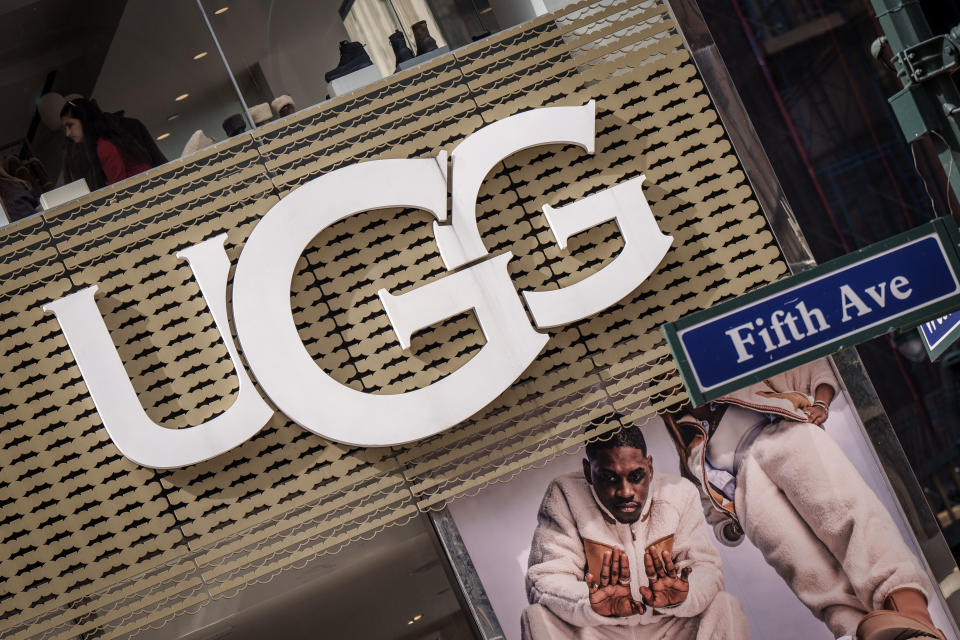
Ugg Brand’s Beginnings
In 1978, entrepreneurs Brian Smith and Doug Jensen started Ugg Imports Inc. Jensen left after one year due to other business commitments, so Smith is widely considered the founder of the brand and was responsible for establishing its early success and adoption in the U.S.
Born in Australia and an avid surfer, Smith was living in Santa Monica, Calif., while he studied business at UCLA’s Anderson School of Management. As the story goes, one night after a chilly surf in Malibu, Smith pulled on a pair of sheepskin boots from his native home and realized that the boots (called “uggs” in Australia) were not available in the U.S. Thus was born his idea to import and sell the footwear in America. After their application was denied to be a distributor for the Australian boot manufacturer Country Leather, Smith and Jensen set up their own company and trademarked the name “UGG” in the U.S.
In its first year in business, Ugg Imports sold 28 pairs of boots. Over the next 17 years, that number steadily rose and Smith changed the company’s name to Ugg Holdings Inc. However, his business was still mainly centered in California. According to reports, as of 1994, 80 percent of its sales were in Orange County — which makes sense considering its prime customer.
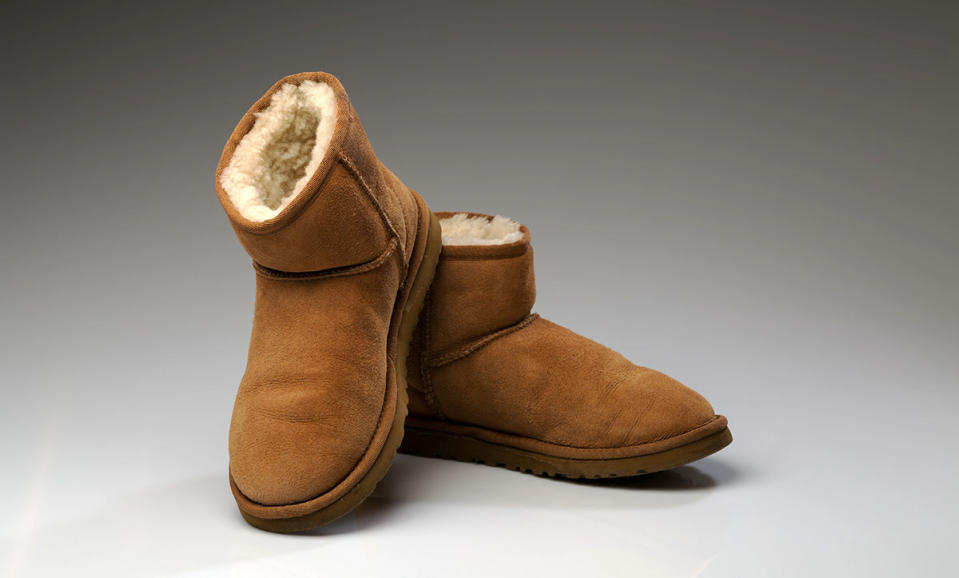
Ugg’s Original Use
Australian ugg boots were first used by shepherds and sheep shearers, who would use leather straps to wrap sheepskin around their legs. It was especially helpful during shearing season, because the lanolin from the sheep’s wool was known to rot regular leather boots.
The same technique was also reportedly used by Australian and British pilots during World War II to prevent frostbite during unpressurized flights.
The boots entered more mainstream fashion in the 1970s, when Australian surfers adopted them as their warm, post-surf footwear and they grew in popularity among the international surf community. That’s why Smith was wearing them on that beach in Malibu, and that’s who was buying the Ugg brand in the 1980s and early ’90s.
As for where the name “ugg” comes from, the phrase has been credited to many different individuals, including those war pilots and the wife of Frank Mortel, who founded Mortel’s Sheepskin Company in the 1950s. But one thing remains the same in every legend, that it’s a slang version of “ugly.”

Deckers Buys Ugg
In June 1995, Deckers Brands (then known as Deckers Outdoor Corp.) announced it had signed a letter of intent to acquire Ugg Holdings, based in Carlsbad, Calif. for $14.6 million. Industry sources told FN at the time that Ugg sales reached about $15 million in 1994, an increase of more than 60 percent over 1993 results.
Douglas Otto, the then-president and chief executive officer of Deckers, said in a statement, “Ugg is a leader in its niche and is well-positioned to take advantage of the shift to more comfortable, casual footwear.”
Deckers saw opportunity to expand Ugg’s audience beyond the surf community and its specialty retailers, to reach a wider customer base. As for Smith, he needed Deckers’ deep pockets.
In a 2022 interview with The Brainz Magazine, Smith recalled, “We had a lot of bookings but not able to fulfill the orders because we didn’t have the finances. It wasn’t capitalized well from the beginning. Luckier, I had a buddy who owned Deckers. Doug had taken his business public, he had the cash, and his business died every winter and our business died in the summer.”
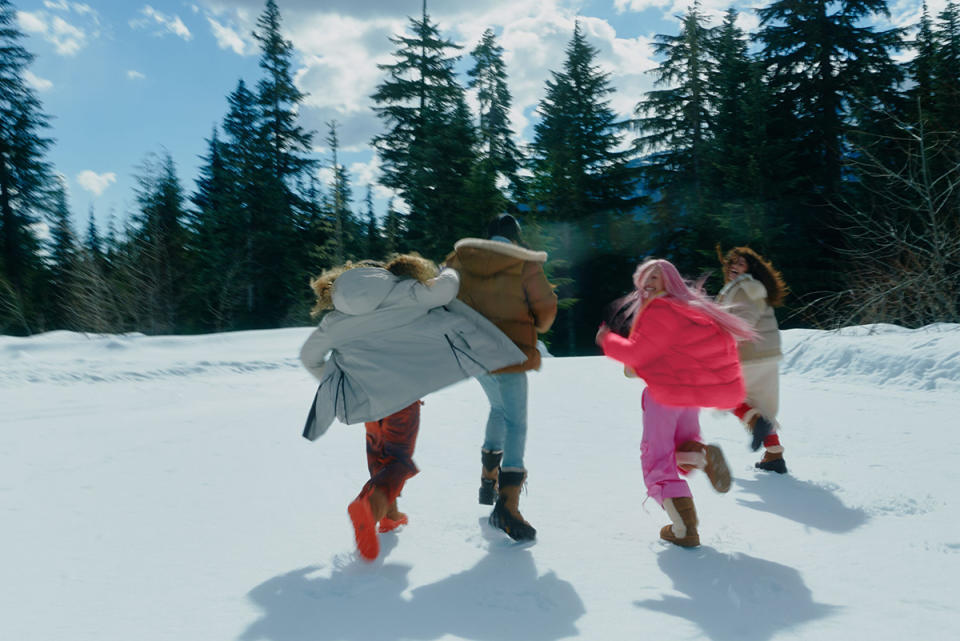
Ugg Goes From Surf to Snow
Over the next year, Deckers gave Ugg a major overhaul. It closed the brand’s Carlsbad office and integrated its customer service operations, as well as warehousing and distribution. It fired the sales team and handed those responsibilities to another division, Simple Shoes.
And with Smith still in the mix as a consultant, it rolled out an expanded product line that included more rugged and casual looks and different outsoles. Deckers’ marketing team also began targeting the winter sports arena, including sponsorships at snowboard tournaments and ice hockey and skating events. And it beefed up its consumer advertising.
Smith has described making the leap from surf to snow as one of the “most significant ventures” for Ugg, one that “set the company on a course of enormous growth,” he writes on his website.
Ugg in the 2000s
In the early 2000s, the Ugg started a fashion craze that began with the California crowd, including many celebrity fans, but quickly spread across the country — and the globe.
There were numerous pivotal pop culture moments during the period. In 2003, Oprah Winfrey included the brand’s Classic Short boots on her famed “Oprah’s Favorite Things” list, sending the style into the stratosphere. That year, Ugg chalked up $23.5 million in sales, and it completely sold out of its Classic boot that fall.
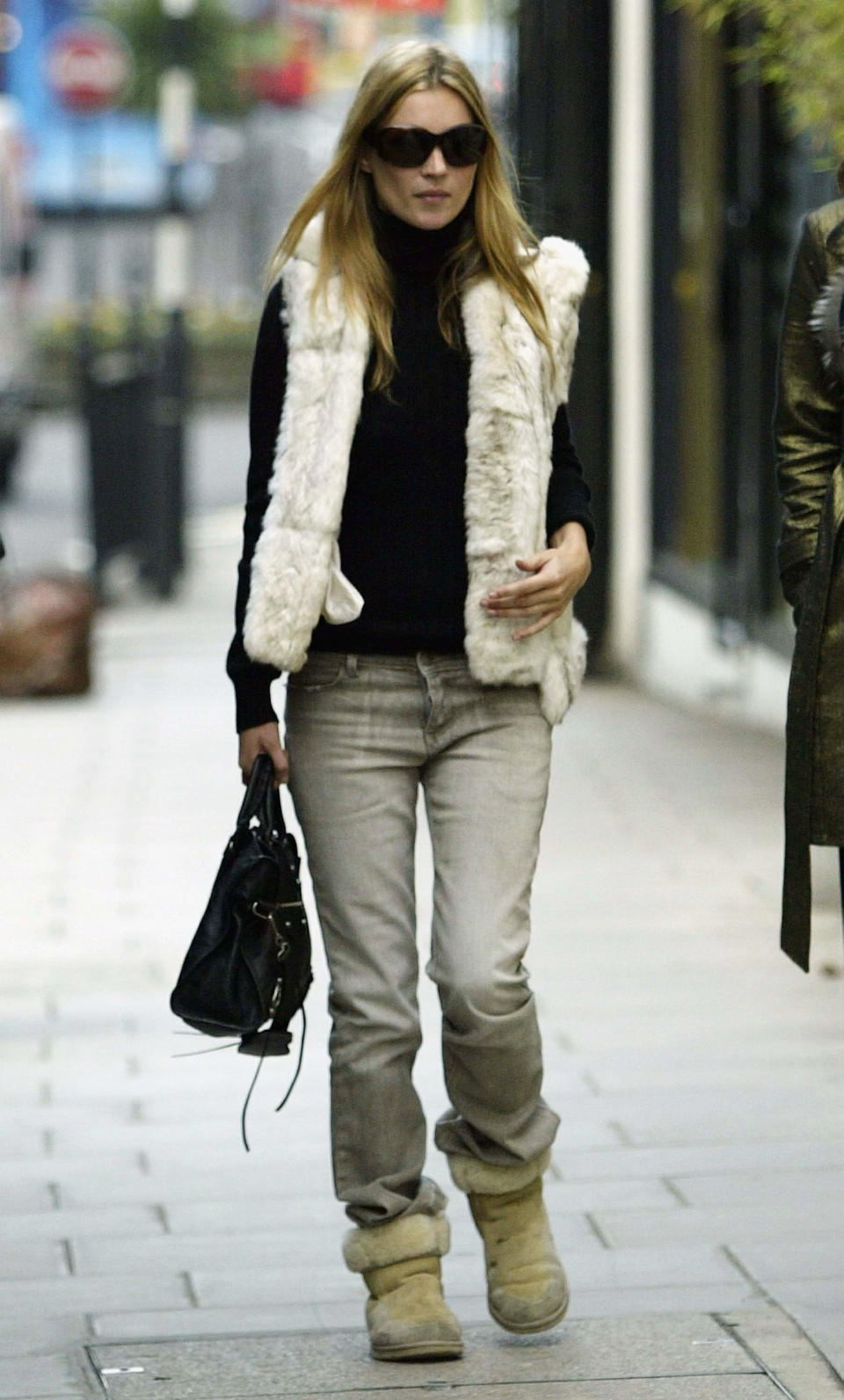
The momentum only continued from there. In 2004 alone, Sarah Jessica Parker wore a custom ruby red pair of Uggs while on set for “Sex and the City” and Beyonce went to the Super Bowl in a pair of the shearling boots. Plus, Paris Hilton became one of the brand’s most loyal fans, with a closet full of blinged-out versions. And even male stars like Ben Affleck and Shia LaBeouf were spotted in the warm boots both on-set and off.
The Ugg team capitalized well on the demand, by adding new colors, outsoles and embellishments to the Classic line and expanding its slipper collection. In 2008, for instance, the brand was still seeing huge gains even amid the economic downturn, posting full-year sales of $582 million.
Ugg has remained a star performer for Deckers in the years since, especially during the height of the pandemic, when consumers stocked up on cozy footwear options. Sales lagged, though, post-pandemic — perhaps because Deckers turned its focus to its booming Hoka brand. However, in mid-2023, the brand saw an upswing in sales, thanks to a surge in demand for its Ultra Mini boots. In the first three quarters of fiscal 2024, Ugg brought $1.88 billion in revenue.
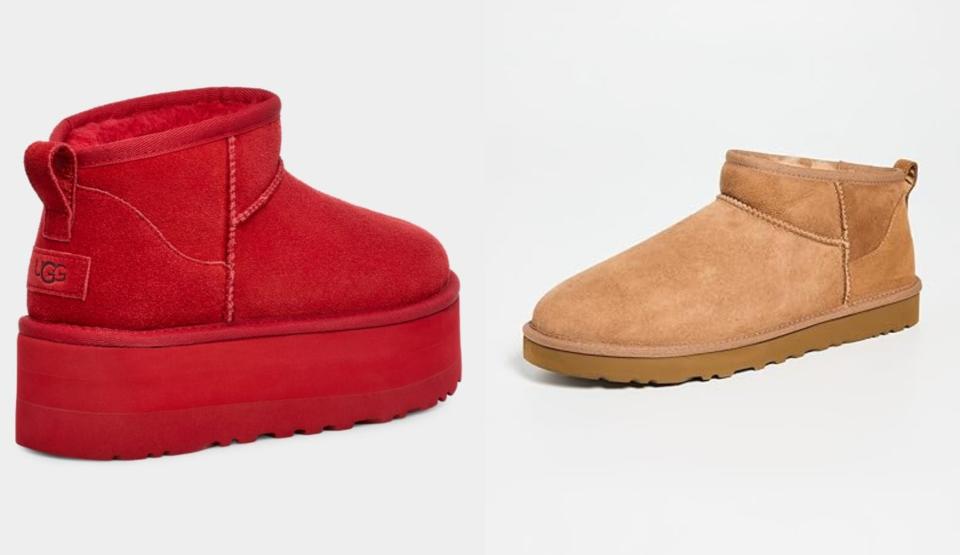
Ugg Most Popular Styles
The Ugg Classic Short boot is the brand’s iconic style, embraced not only for its comfortable fit and soft lining but for its recognizable silhouette. Over the years, it has certainly evolved with many new colors and comfort improvements, but the essence of the shoe has remained the same for through the decades.
In 2020, Ugg introduced a new silhouette, the Classic Ultra Mini Platform boot, and it quickly became a style many coveted. Equipped with 2-inch platform soles, the style gives the wearer a subtle and sleek boost. In 2022, Bella Hadid was spotted in New York munching on a piece of pizza sporting the newly revamped style, sparking a newfound interest in the platform bootie. Even smaller, the Classic Ultra Mini is the shortest of the bunch. Retailing for $150, the shoe features pull tabs and comes in a variety of colorways, including “Pink Glow” and “Black.”
Ugg also has many fans for its at-home shoes. The Classic Slipper, for instance, is a perennial best seller, thanks to its easy, slip-on shape and cozy shearling cuff. And in recent seasons, the popularity of the Tasman scuff has grown as well, leading to new iterations such as the Tazz on a platform sole and the Tasman Regenerate, made with sustainable materials.
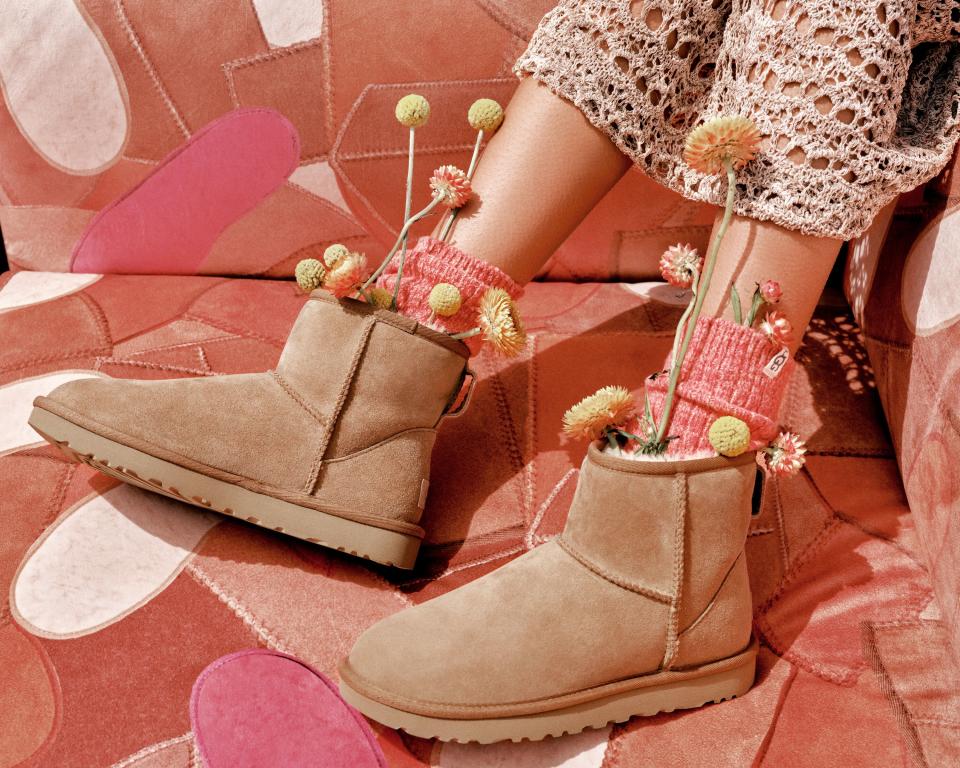
How Ugg Boots Are Made
As its name implies, Smith’s company, Ugg Imports, started by importing sheepskin boots from factories in Australia. And that continued for roughly 25 years, even after Deckers acquired the business. But in the 2000s, when product demand skyrocketed, Deckers told FN that in order to increase capacity it was moving some of its manufacturing overseas to China. Now, the majority of the brand’s products are made in Asia.
That discrepancy, between “ugg” boots made in Australia and boots produced by the Ugg brand, has led to countless legal disputes and confusion among consumers. In late 2023, for instance, a debate ignited on TikTok about the quality of Ugg merchandise and whether products sold by the Australian company Ugg Since 1974 are the “real” thing.
Both companies denied any connection to each other. And in a statement to FN at the time, a Deckers spokesperson defended the quality of its products: “One of the Ugg brand pillars is product that is crafted to last. We are extremely proud of the materials we use, the innovation around new materials and the longevity of our products.”
Ugg also made sustainability a core pillar of its brand as well. After the signing of the 2016 Paris Climate Agreement, Ugg and its parent company began working to establish and address long-term environmental goals. The results can be seen in its growing Regenerate footwear collection, which uses sheepskin from land farmed with regenerative practices that help restore the soil, promote wildlife diversity and preserve the land.
It also has incorporated more plant-based materials into the line, including sugarcane EVA outsoles. And its UggPlush linings are made from a blend of repurposed wool and recycled polyester fibers.
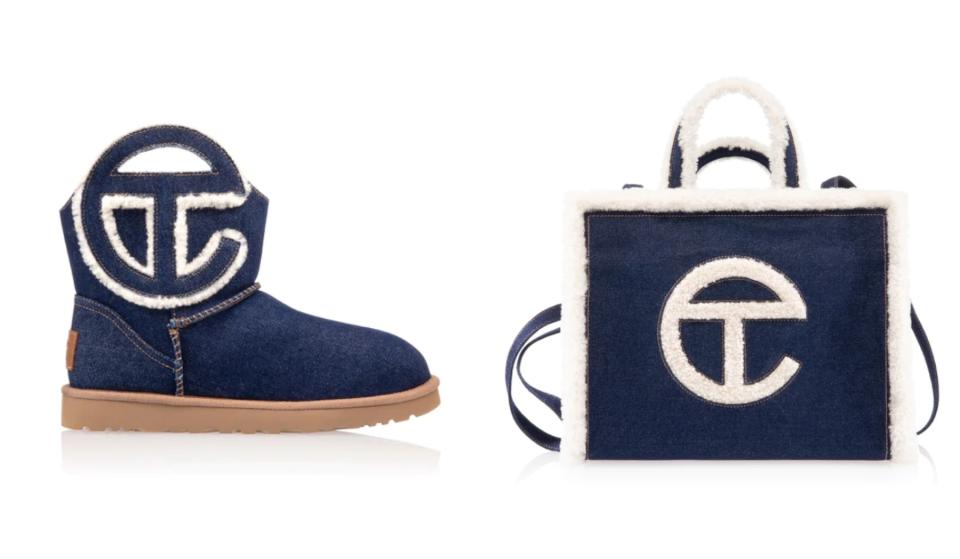
The Most Iconic Ugg Collaborations: From Pop Culture to Luxury Brands
Launch Gallery: The Most Iconic Ugg Collaborations: From Pop Culture to Luxury Brands
Best of Footwear News
Sign up for FN's Newsletter. For the latest news, follow us on Facebook, Twitter, and Instagram.
Solve the daily Crossword

